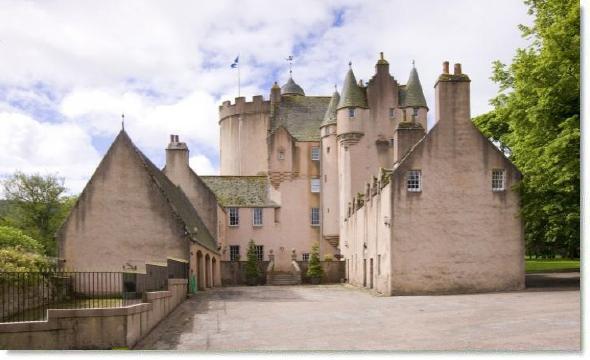Sir Alexander Seton, 1st Earl
of Huntly, was the elder son of Sir
Alexander Seton, Lord Gordon, and
Elizabeth Gordon the Heiress of Gordon
(second son of Sir William Seton of Seton,
1st Lord Seton). Seton and his wife received from Robert,
Duke of Albany, a charter, with remainder to
their heirs, of the lands and baronies of
Gordon, and other lands belonging to the
late Lord of Gordon; and Seton was
thereafter styled Lord of Gordon and Huntly,
and later acquired those lands and the
Barony of Midmar.
The Earl of Huntly had issue: by
his first wife, Jean, daughter and heiress
of Robert de Keith, grandson and heir of Sir
William de Keith, Great Marischal of
Scotland, he had no issue; by his second
wife, Egidia Hay, daughter and heiress of Sir
John Hay of Touch and Tullibody he
had a son Sir Alexander Seton, ancestor of
the Setons of Touch in Stirlingshire; and by his
third wife, Elizabeth, daughter of William,
Lord Crichton, Lord High Chancellor of
Scotland, he had three sons and three
daughters, who later took the name of Gordon, the
succession to the Earldom of Huntly being
settled on the issue of this marriage, by
charter 29 Jan. 1449–50. The sons were
George Seton, 2nd Earl of Huntly (later
George Gordon); Sir Alexander Seton of Midmar
(later as Gordon) and ancestor of
the Gordons of Abergeldie; and Adam Seton, Dean of Caithness and rector of Pettie.



